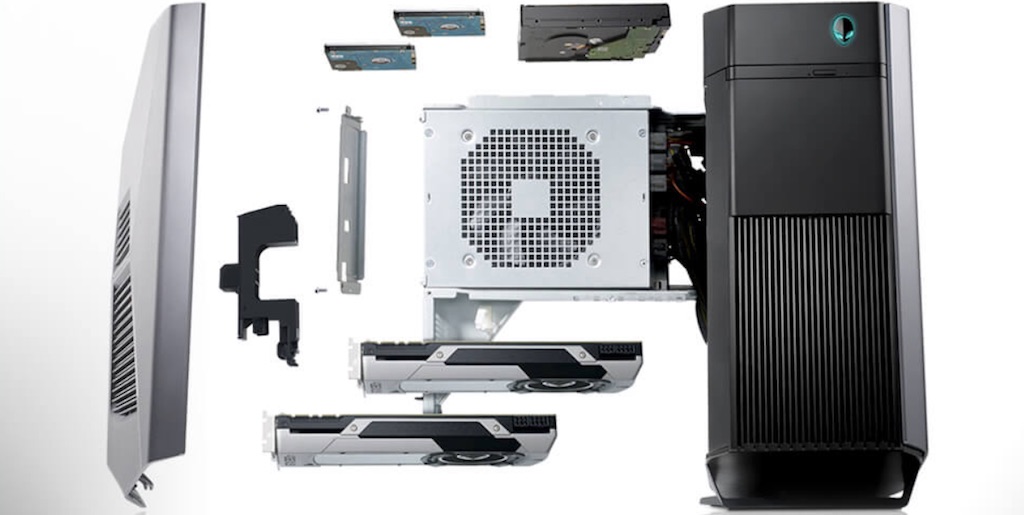
Choosing a gaming PC that will meet your needs—now, and into the future—requires careful consideration of all components. This holds true whether you are buying an off-the-shelf gaming PC, or building one yourself. Obviously, you have greater control over this when building your own gaming PC (that’s a big part of the appeal), but its important to be aware of what’s inside a a brand name gaming rig as well, as you don’t want to limit your options.
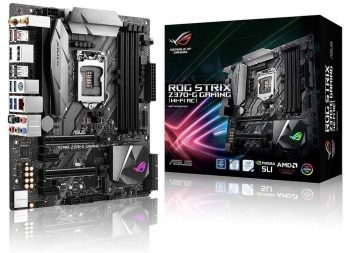 Picking the Right Motherboard
Picking the Right Motherboard
A gaming PC starts with the motherboard. This component is the literal heart of the computer. The other components plug into it, external connectors like USB are mounted to it and the physical size of the motherboard determines how big the PC will be. The number of expansion slots on the motherboard dictate a lot of other factors—like whether you will be limited to a single graphics card and how much (and what type) of RAM can be installed.
Perhaps most importantly, the motherboard determines what CPU you’ll be using: Intel, or AMD. Gaming PCs with Intel-compatible motherboards tend to be the most popular, although with its Ryzen push this year, more gaming PCs from companies like Dell are offering the option of going AMD.
CPU
One of the key components to any computer is the CPU and with a gaming rig, you’ll want a fast one. The gaming CPU of choice for many manufacturers is the 7th generation Intel Core i7-1700, a quad-core processor that typically runs at 3.6GHz. You’ll find it in top-rated gaming PCs like the Alienware Aurora.
Unlike most gaming laptops, you can usually upgrade the CPU on a desktop gaming PC, should you choose to do so. This is one of the areas where that motherboard choice comes into play, though: you’ll need to stick with Intel or AMD. It’s also worth nothing that Intel and AMD both released new extreme CPUs this year aimed at gaming PCs (the Intel X series and Ryzen Threadripper, respectively) that are not compatible with previous generation motherboards.
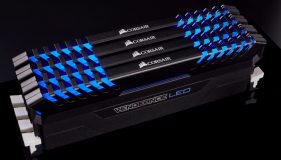 RAM
RAM
The more the better, and the faster the better. 8GB of RAM is the minimum for many PC games, but playing with the minimum doesn’t always deliver the best experience. 16GB is more common for gaming PCs. When you have the option, DDR4 RAM offers greater throughput speed than DDR3. And if you use a see-through PC case, there are gaming RAM kits Like Corsair’s VENGEANCE series that include LED lighting, so even your RAM looks cool … When upgrading RAM, pay attention to what’s supported by the motherboard, and install in matching pairs for optimal performance.
Video Card
When it comes to a gaming computer, there is no single component that has as big an impact on the experience as the video card. No integrated graphics here, you’ll want something standalone.
The two big names in video cards are Nvidia and AMD. Both offer video cards to fit virtually any price range. Generally speaking, the higher the processing power (measured in TeraFLOPS), the more expensive the card. Another factor that can influence performance (and price) is the amount and speed of dedicated VRAM.
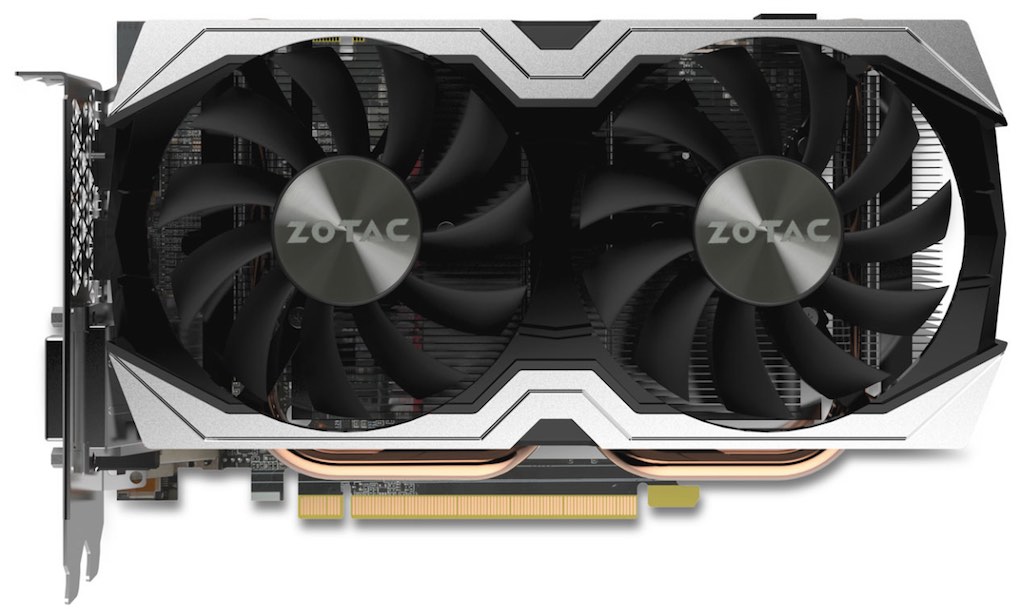
Extreme PC gaming may call for a dual monitor setup, or you might be looking at trying to drive a 4K monitor with all the game settings on Ultra. In that case, you may be looking at a dual-card setup, but you’ll need to make sure your motherboard has enough PCI slots to install more than one card. Interested in VR? Check the VR headset of choice for its minimum video card requirements.
Other factors to consider before choosing or upgrading your video card include making certain your power supply and cooling are up to the demand (graphics cards consume a lot of power and throw off a lot of heat), that the video card matches any requirements for your monitor (not just connectivity, but also features like G-Sync), and that your PC case has the room for it.
Storage
Storage is the often overlooked component of a gaming PC. Actually, it’s not the fact that storage is overlooked—everyone knows they need lots thanks to today’s games and their ever growing installs—it’s the fact that storage speed, and how that can affect the gaming experience, is often overlooked.
Gaming PCs usually have multiple drive bays. You’ll want a fast (7200 rpm) hard disk in at least one of those, with plenty of capacity (1TB or more). That takes care of mass storage. But the game changer is solid state storage, or SSD. These are becoming more common in desktop PCs, but most only offer a small amount of storage—enough to install the operating system. That makes your gaming PC snappier, but you’ll get a real boost by going with a larger capacity SSD and not only installing the OS, but also your favourite games on it. This speeds up the most annoying aspect of many games, the load time. You can read more about SSDs in gaming PCs in this post.
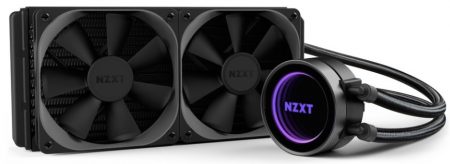 Power Supply and Cooling System
Power Supply and Cooling System
While they may not enjoy the spotlight of the video card, CPU, RAM and storage, it’s important not to ignore the power supply and cooling system for a gaming PC.
Every component draws power, and if you upgrade to a more capable version of a component (a new video card for example), chances are it will have a higher power requirement. If your power supply can’t handle the load, it will have to be replaced. 650W power supplies are common in gaming PCs, although at the high end (where a big CPU and multiple video cards are being used) that can go as high as 1500W.
Cooling is also important. Those high powered components give off heat and if it’s not pushed out of the PC case, the computer will quickly overheat. That’s not good. Fans are the old standby, but gaming PCs with their extreme heat production are sometimes equipped with more efficient liquid cooling systems.
Connectivity
Finally, don’t forget about connectivity. Not just ports (part of the motherboard and video card), but also networking. You’ll want Bluetooth, even though most gamers prefer hard-wired keyboards. Ethernet is important since many gamers choose to physically connect to their router to reduce any latency or lag. Of course many people prefer the wireless freedom of Wi-Fi, but make certain your gaming PC is equipped with an 802.11ac Wi-Fi adapter for maximum speed.
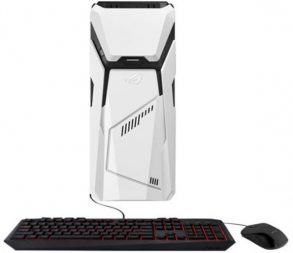 This covers the basic setup for a gaming PC, the key components you need to take into consideration. If you’re looking for a killer gaming PC that’s pre-configured and ready to go right out of the box, check out all the high performance computers at Best Buy. That will take most of the guesswork out of the equation. And if you’re looking to upgrade the components on a current PC—or to build your own PC—Best Buy has you covered there as well, with all the computer components you’ll need, from motherboard to video card.
This covers the basic setup for a gaming PC, the key components you need to take into consideration. If you’re looking for a killer gaming PC that’s pre-configured and ready to go right out of the box, check out all the high performance computers at Best Buy. That will take most of the guesswork out of the equation. And if you’re looking to upgrade the components on a current PC—or to build your own PC—Best Buy has you covered there as well, with all the computer components you’ll need, from motherboard to video card.




When looking for your CPU, RAM and motherboard, one great tip is go with the latest technology instead of looking solely for the fastest speed. Each generation of chip sets usually reflects huge leaps in performance. This means that even with a slower or cheaper CPU you can get more for your money.
Comments are closed.